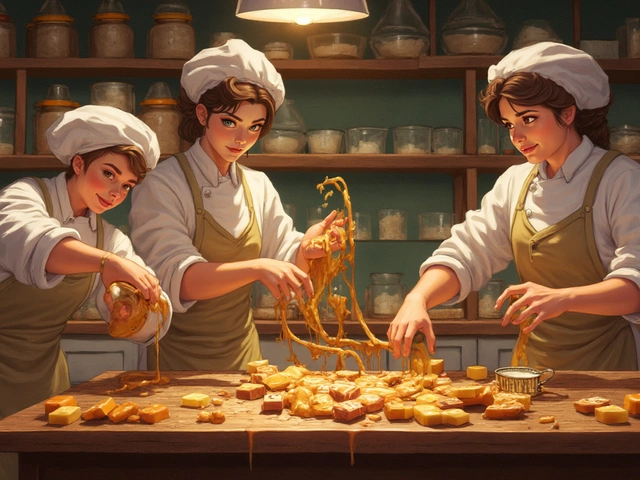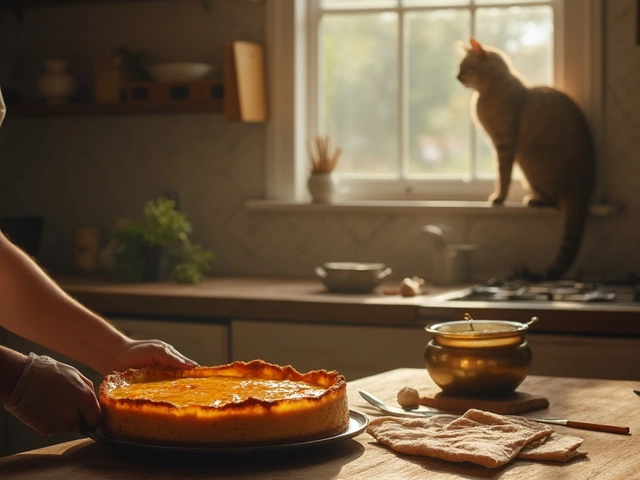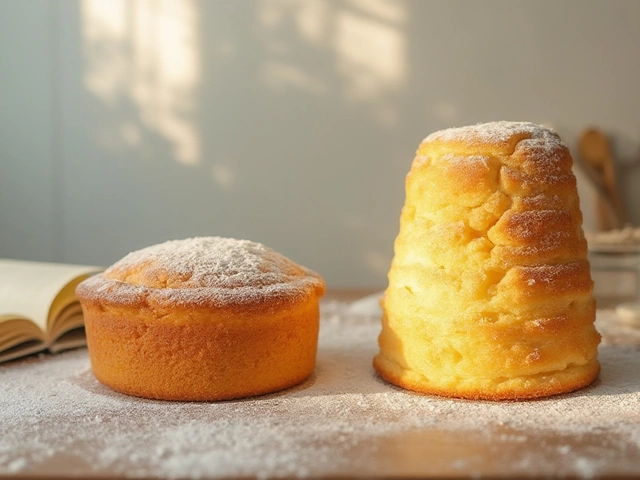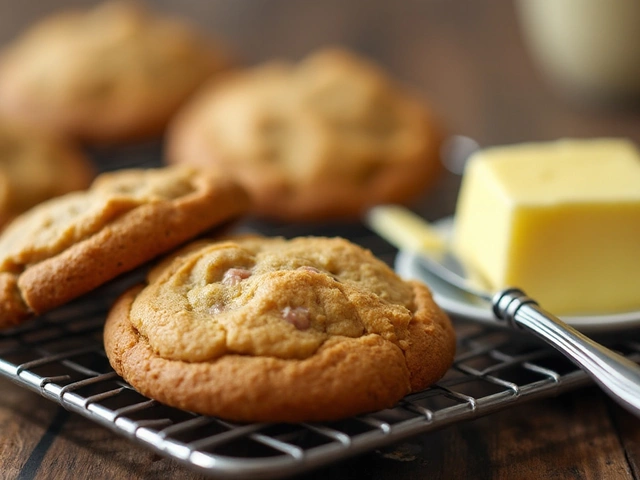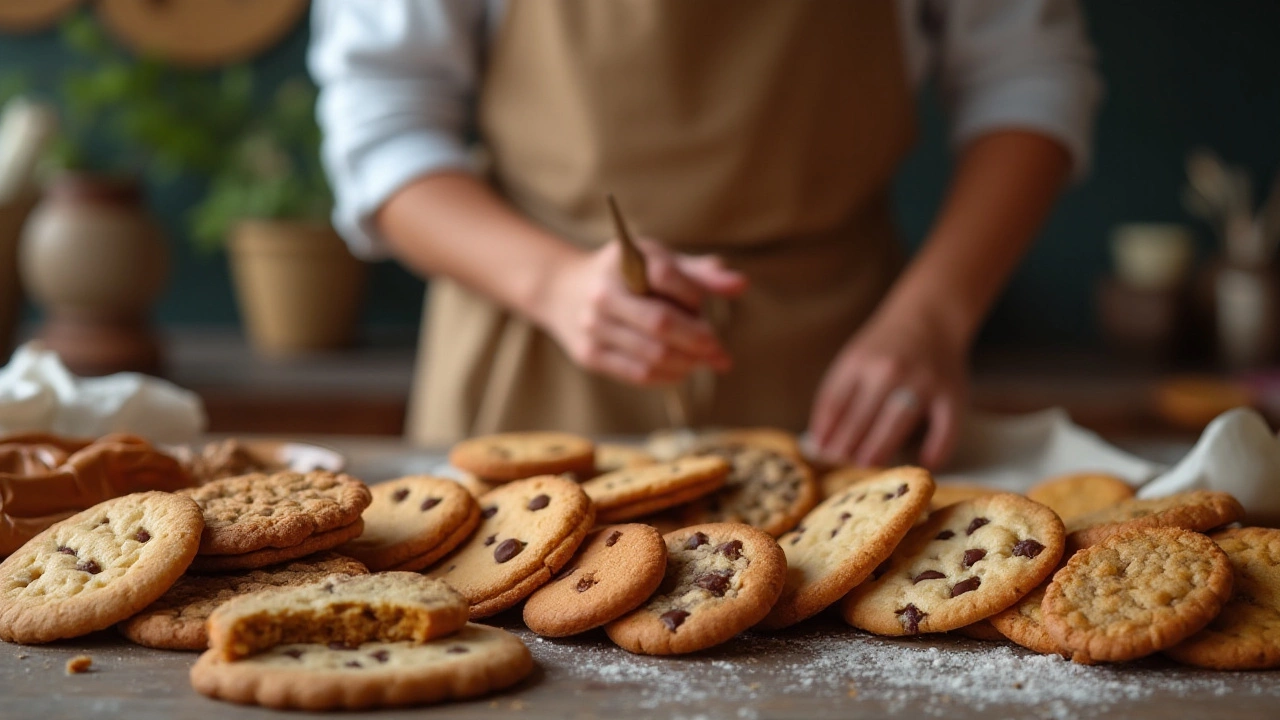
Is there anything more delightful than biting into a perfectly baked homemade cookie? Whether it's the crunch of the chocolate chip, the chewy allure of an oatmeal raisin, or the simple joy of a sugar cookie, these sweet treats are a staple in kitchens around the globe. Today, we embark on a delicious journey to uncover the most beloved homemade cookie in the world.
While personal preferences vary widely, certain cookies have managed to capture the hearts and tastebuds of a vast array of people. What makes these cookies so universally adored? Join in as we dive into their rich histories, cultural twists, and timeless recipes that have stood the test of time.
- Origins of Popular Cookies
- Global Favorites and Variations
- Secrets to Making the Perfect Cookie
- Fun Facts and Baking Tips
Origins of Popular Cookies
Cookies have long held a sweet spot in our hearts, evoking memories of childhood snacks and home-filled aromas. But have you ever wondered how these beloved homemade cookies came to be? Their journey is fascinating—tracing back to centuries-old kitchens, local cultures, and evolving palates. Let's embark on this journey to understand how today's homemade cookies became favorites across different lands.
The history of cookies begins as early as 7th century Persia. This was a time when sugar was first cultivated and starting to be commonly baked into confections. These early iterations, though quite different from the delights we enjoy today, laid the foundation for the classic cookie. As sugar spread west, so did the idea of these sweet treats, finding their way into Northern European desserts during the Renaissance. By the time of the Middle Ages, the cookie had become a popular nibble across Europe, evolving with regional flavors and ingredients.
The chocolate chip cookie, perhaps the most famous of all American cookies, has a story that reflects both accident and ingenuity. Ruth Graves Wakefield of the Toll House Inn stumbled upon this creation in the 1930s when she discovered that adding chopped-up chocolate to her cookie dough produced a distinctively satisfying texture and taste. What started as a happy mistake has turned into a global legend, propelling the chocolate chip cookie to fame as a defining homemade cookie.
"The best things in life are accidental." — Ruth Graves Wakefield
Elsewhere, cookie traditions developed their own captivating stories. The beloved snickerdoodle, with its whimsical name, likely originated in either Germany or the Netherlands as a variation of sweetened bread. Biscotti from Italy, meanwhile, boast an ancient ancestry, enjoyed by Roman soldiers for their durable, twice-baked snappiness. Each transition across a border brought with it new techniques and adaptations, enabling these favorite cookies to take on distinct qualities while maintaining their core enjoyment.
In exploring these origins, it's clear how the cookie's evolution is intertwined with cultural exchanges and advances in cooking technology. Today, cookies are a delightful canvas reflecting rich histories and cherished family traditions. From Christmas treats in Sweden to ‘biscuit’ selections for English tea, each cookie variant tells a story of migration, innovation, and perhaps a bit of serendipity. In every bite, we're connected not just to our own past but to a wider tapestry of global culinary heritage.
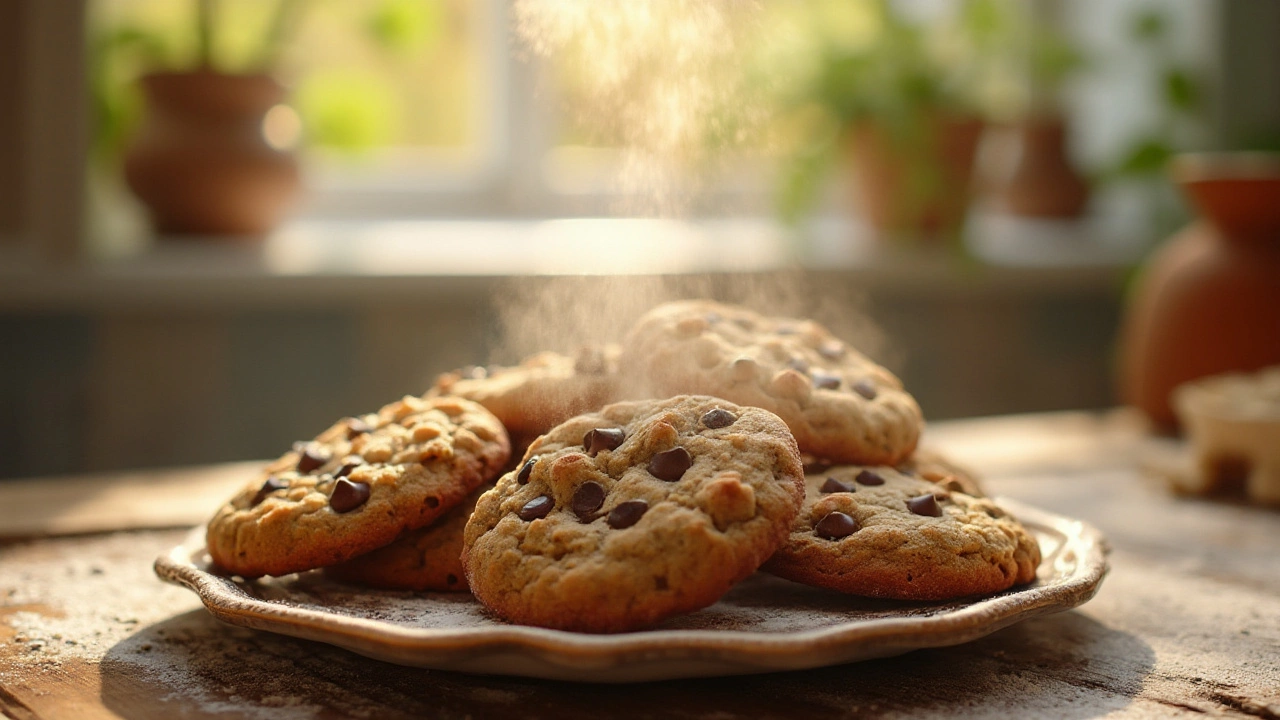
Global Favorites and Variations
When it comes to homemade cookies, each region of the world boasts its own cherished favorites. In the United States, the undisputed champion remains the much-loved chocolate chip cookie. Invented by Ruth Wakefield in the 1930s at the Toll House Inn in Massachusetts, the chocolate chip cookie's allure lies in its comforting blend of butter, sugar, and semi-sweet chocolate, providing a balance of sweet and savory that is hard to resist. While the classic version reigns supreme, bakers often put their spin on it, adding nuts, swapping chocolate for chunks of different flavors, or incorporating exotic spices to make it their own.
Venture across the Atlantic, and you'll find Europe has its own sweet darlings. Scotland offers its famous buttery shortbread, a delightful crumbly treat that pairs perfectly with afternoon tea. The French, known for their culinary finesse, offer palmiers—crispy, sugar-coated pastries that resemble palm leaves. Such cookies emphasize texture and flavor subtleties, speaking to the sophisticated palate. In Italy, the cantuccini, often referred to as biscotti, are twice-baked, making them crunchy and ideal for dipping into a glass of Vin Santo or robust espresso.
Asian and Middle Eastern Treats
In Asia, cookies are often lighter and less sweet than their Western counterparts. Japanese matcha cookies are a visual and taste delight, capturing the earthy flavor of green tea in a tender biscuit. Meanwhile, in China, almond cookies, made with almond flour and topped with a single almond, are a Lunar New Year staple, symbolizing luck and prosperity. Heading to the Middle East, you will encounter maamoul, a delectable treat filled with dates or nuts and often dusted with powdered sugar. These cookies hold a deep cultural significance, often baked around religious holidays and celebrations, with each family guarding its unique recipe handed down through generations.
"A cookie by any other name would taste as sweet," famously quipped Baker Paula McCartney. "Baking isn't just about following a recipe; it's about culture, family, and tradition."
Adapting to New Tastes
As our world becomes increasingly interconnected, so do our culinary tastes. The fusion of different cultures has given rise to delightful cookie variations that blend the best of multiple worlds. Think about a tahini-infused chocolate chip cookie, borrowing from Middle Eastern flavors, or spicy ginger snap cookies enhanced with authentic Asian spices like cardamom and star anise. These global ties are not just a testament to the universal love for cookies, but also to how baking can act as a bridge, bringing people together one batch at a time. As baking enthusiasts continue to experiment and share their creations, the rich tapestry of international cookie favorites will undoubtedly keep expanding, keeping the age-old tradition of homemade cookies forever vibrant.
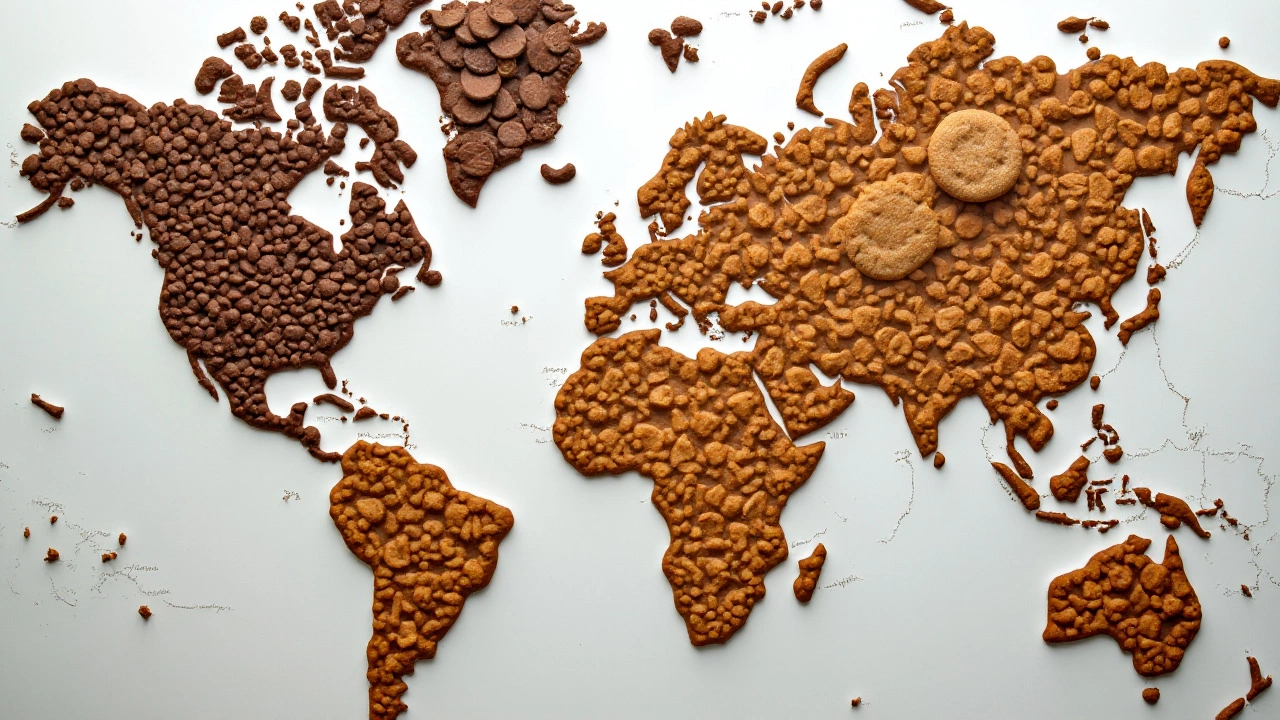
Secrets to Making the Perfect Cookie
Creating the perfect homemade cookie requires more than just tossing together a few ingredients. It's an art that blends science and creativity, producing treats that are memorable and comforting. Every step in the baking process, from selecting your ingredients to the precise baking time, plays a crucial role. Key to this is using fresh, high-quality ingredients. For instance, swapping regular butter with European-style butter, which boasts a higher fat content, can significantly enhance flavor and texture. As every seasoned baker will affirm, the devil is in the details. Another secret often whispered among bakers is the importance of room temperature ingredients, which blend more uniformly and result in a better-dough consistency.
The precision of measurements cannot be overstated when aiming for cookie perfection. Baking is a science, and ratios matter profoundly. Measuring flour correctly can mean the difference between fluffy cookies and dense, hard ones. Remember to spoon the flour into your measuring cup before leveling it off to avoid using too much. Semisweet chocolate chips are a classic choice for an American chocolate chip cookie, but experimenting with dark chocolate chunks can elevate a simple cookie into a gourmet delight. It's all about the delicate balance of flavors and textures.
Temperature and timing are critical when baking. A preheated oven ensures even baking, preventing cookies from spreading out too thin or ending up too thick. Start checking your cookies towards the end of the suggested baking time. The edges should be golden while the center remains soft. Call it the cookie goldilocks zone, if you will. Underbaking slightly allows for carryover cooking, which continues as the cookies cool on the tray. This step guarantees that your cookies will have a soft center with just the right amount of chew.
The Magic of Refrigeration
Refrigerating cookie dough is a trick that culinary experts swear by. Chilling the dough enhances the flavors as the sugar in the dough absorbs more of the liquid, resulting in a butterscotch-like flavor. Left in the fridge, the dough also becomes firmer, developing richer flavors. This translates into cookies that are wonderfully chewy inside while remaining crisp along the edges. Timing is everything: refrigerate your cookie dough for at least one hour, or even overnight, for the best results.
“Good baking begins with just the right ingredients and a little bit of patience,” says famous pastry chef Dominique Ansel. “The rest is all about learning and creating your style.”
| Ingredient | Benefit |
|---|---|
| Butter | Adds flavor and richness |
| Brown Sugar | Enhances moistness and chewiness |
| Eggs | Bind ingredients and add texture |
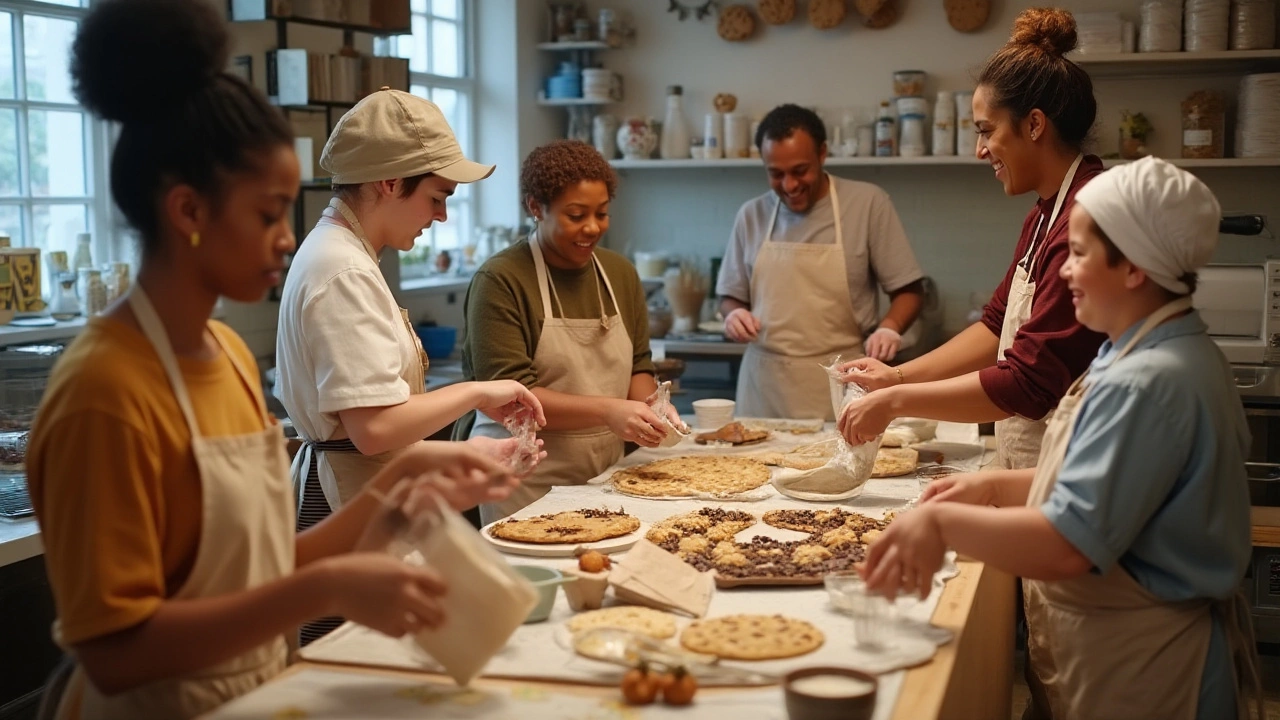
Fun Facts and Baking Tips
Baking homemade cookies is not just about mixing ingredients. It’s an art that has evolved over centuries, celebrated in kitchens worldwide. Did you know that the chocolate chip cookie was actually invented by accident? In the 1930s, Ruth Wakefield, who owned the Toll House Inn in Massachusetts, added chopped chocolate to her cookie dough, expecting it to melt completely. Instead, the chocolate pieces only softened, thus creating the delightful cookies we know today. This serendipitous discovery set off a permanent love affair with chocolate chip cookies.
When you strive to make the best homemade cookies, understanding your ingredients is key. Flour type, for instance, significantly alters texture. All-purpose flour is a constant favorite for most cookies, but for tender cookies, you may consider pastry flour, while bread flour adds a chewy texture. Butter is another crucial component, contributing to flavor and consistency. Using unsalted butter gives you more control over saltiness, allowing you to adapt recipes to perfection.
"Cookies are made of butter and love." - Norwegian Proverb.
For those who seek tips on baking, one of the best-kept secrets is to chill your dough. Resting the dough for at least an hour—or overnight—helps the flavors meld and results in a cookie that’s both chewy and beautifully textured. Measuring ingredients correctly cannot be overstated, as too much or too little flour can entirely change the outcome. Invest in a kitchen scale for the most precise results. Baking cookies at the right temperature is also crucial. Too hot, and they may burn on the outside before finishing inside.
Want a creative twist? Add-ins can significantly elevate your cookie game. Substitute half a cup of butter for peanut butter to add a nutty depth, or sprinkle sea salt on top before baking to enhance sweetness. Incorporating oats, shredded coconut, or nuts can also create interesting textures. Use this chance to explore flavors and customize based on preferences or curious culinary inclinations.
It's essential to remember the little tricks that make all the difference. For instance, leave enough room between each scoop of dough on the baking sheet to prevent cookies from merging. This small step ensures each cookie bakes evenly and with enough space to spread. Before diving into your next baking session, consider these facts and tips that not only simplify the process but also promise a delightful outcome every time. Here’s to the beloved homemade cookie—the sweet delight cherished worldwide.

